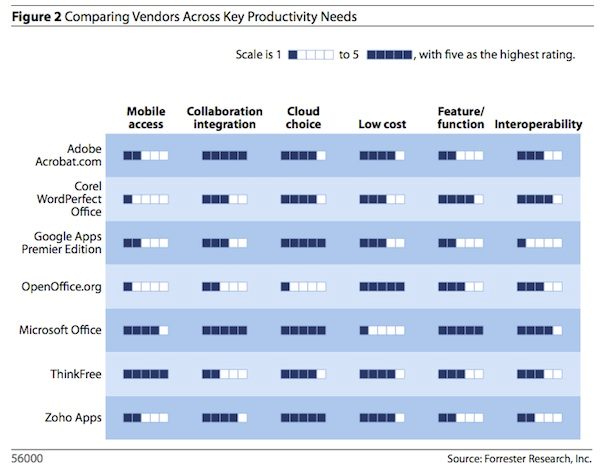
Oh Microsoft Office, how we loathe and love you. With so many open source and free office solutions for office productivity, why is it that many of us in the enterprise still keep using the well-known office suite?
According to a new Forrester report, though Microsoft Office continues to be a mainstay both in the enterprise and at home, developing concerns about productivity as they relate to mobile, cloud, and collaboration may bring a shift in enterprise behaviors.
Identifying the Shift: Integration, Collaboration & Mobility
Thanks also to the recession, more and more companies have been researching alternatives with some switching to OpenOffice and Google Docs altogether. With an added focus on business process integration and automation, companies want more than content storage and have demonstrated an interest in extending collaboration platforms to support structured content.

The recession not only cut budgets, but also demanded increased productivity. Companies value collaboration more than they once did, recognizing the time and money it can save. As a result, they not only expect employees to work longer and harder but they also expect office applications to deliver higher value by enabling greater automation and synchronization between Office apps like Outlook, Excel, and SharePoint.

Additionally, with many mobile workers using mobile devices to access work information, expectations at work are being forced to change along with it to include and even demand better tools to do their job while providing top-notch security.
Recommendations for Productivity
As the information workplace strategies for productivity move from a one-size-fits all to a fit-to- purpose approach, the enterprise is encouraged to move with it. The Forrester report makes several recommendations for how to establish the foundation for the next wave of productivity aimed at aligning tools with employee needs.
First and foremost, an organization must learn how their employees work and understand what productivity and collaboration means to them in order to provide context for subsequent technology decisions. How many employees work remotely and require a flexible platform from which to collaborate? How many of your employees actually need to collaborate with others or integrate with other platforms?
Many companies have grown along with Microsoft and as a result may not understand how much of their operation depends upon Microsoft strategies and platforms. Assess the infrastructure to fully understand what’s working and what isn’t and how other tools can supplement the process.
The fit-to approach makes it so a mixed-use environment can be supported. By ensuring that each employee has the right tools, rather than the same tools can save time, money and encourage productivity.
